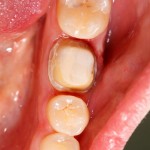
Gingival retraction is necessary for the identification of finish lines for fixed prosthodontics, and the management of cervical abrasion, root caries, and root sensitivity. A range of techniques is available to achieve this, mechanical, mechano-chemical and surgical. The aim of this review was to assess the efficacy of cordless versus cord techniques in achieving hemostasis control and gingival displacement and their influence on gingival/periodontal health.
Methods
Searches were conducted in the Medline/ PubMed, Web of Science, Science Direct, Embase, Cochrane Library, Open Grey and the Pro-quest Dissertation Abstracts and Thesis databases. Two reviewers independently selected studies and abstracted data with study quality being assessed using the Cochrane risk of bias tool. Randomised and quasi-randomised trials were considered.
Results
- 7 studies (4 RCTs, 3 quasi-RCTs) were included.
- 2 studies were considered to be at low risk of bias, 3 at unclear risk and 2 high risk.
- Sample size ranged from 8 to 252 patients.
- Haemostasis control (4 studies)– 3 studies found cord techniques were less efficient in controlling bleeding and to lesser extent, when non-impregnated cords were used. 1 study found no difference between cord and cordless gingival retraction.
- Gingival displacement (5 studies) – 2 studies found no difference, 1 noted a more effective gingival displacement when a paste system was used while 2 showed greater gingival displacement when cords were used.
- Gingival/periodontal health (4 studies) – 3 studies reported less traumatic injury to soft tissues when gingival paste was used.
- A paste system, in general, was documented to be more comfortable to patients and user-friendly to the operator.
Conclusions
The authors concluded:
…this article supports the observation that gingival retraction paste can more effectively help to achieve a dry field and at the same time be less injurious to soft tissues; however, its ability to displace gingival tissues, compared to retraction cords, was compromising
Comments
A good database search had been conducted along with a standard methodological approach to this review. A small number of RCTs have been identified addressing the main question but heterogeneity in the included studies has precluded meta-analysis. The findings suggest that both corded and cordless systems have a role in gingival retraction with the authors pragmatically suggesting that when there is greater need for gingival displacement corded systems are used.
Links
Huang C, Somar M, Li K, Mohadeb JV. Efficiency of Cordless Versus Cord Techniques of Gingival Retraction: A Systematic Review. J Prosthodont. 2015 Sep 17. doi: 10.1111/jopr.12352. [Epub ahead of print] PubMed PMID: 26378615.

Gingival retraction-cordless systems more user and patient friendly http://t.co/y3mOgfh0fO
Corded or cordless systems for gingival retraction? http://t.co/y3mOgfh0fO
Gingival retraction-cord give greater displacement https://t.co/y3mOgfh0fO
Don’t miss- Gingival retraction: cord or cordless systems?
https://t.co/y3mOgfh0fO